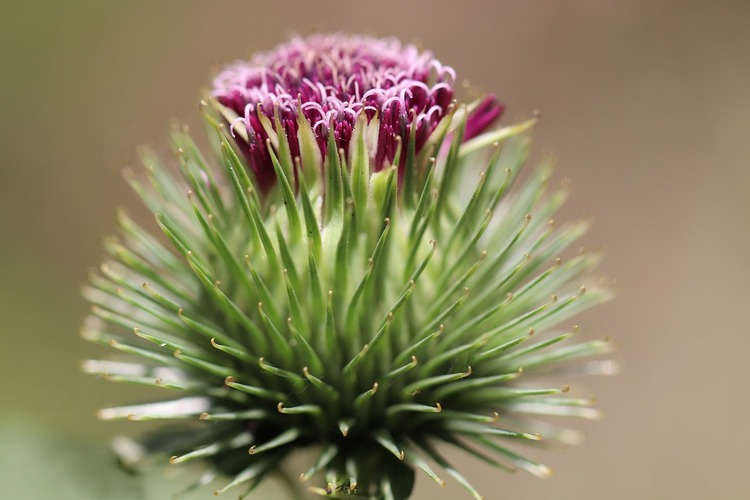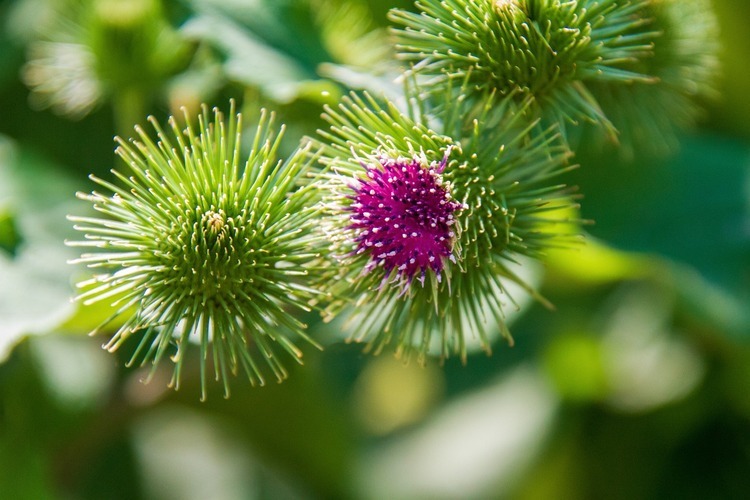What does burdock root tea taste like?
Burdock root tea has gained popularity for its numerous health benefits and flavor profile. If you’ve ever wondered what this earthy beverage tastes like, you’re in for an adventurous treat.
As you sip your first cup of burdock root tea, you’ll immediately notice its deep, earthy flavor and mild sweetness. The taste is often likened to the artichoke, with a slightly nutty undertone. While the flavor might be new to your palate, many people find it enjoyable and refreshing after just a few sips.
If you want to learn more about this tea, keep reading!
Please note: This article contains affiliate links, meaning I may earn a commission if you make a purchase by clicking a link. Of course, this comes at no extra cost to you and helps me keep offering readers solid information.

Burdock Root Tea: Origin and Significance
Burdock root tea is derived from the burdock plant, which belongs to the genus Arctium, specifically Arctium lappa. This plant is native to Asia, particularly in China and Japan. However, its popularity has grown and is now widely used in countries like the United States.
In Chinese and Japanese cultures, burdock root has been a staple in traditional medicine for centuries. Known as a powerful detoxifying agent, the root has been used to treat various ailments and maintain overall health. Its medicinal properties make it a significant ingredient in Traditional Chinese Medicine (TCM).
To make burdock root tea, the root is typically cleaned, sliced, and dried for later use or used fresh. The tea is prepared by steeping these slices or dried burdock root pieces in hot water, similar to other herbal teas. It’s commonly brewed as a tisane, which is a caffeine-free herbal infusion.
What Does Burdock Root Tea Taste Like?
Burdock root tea is a soothing beverage that offers a particular taste experience. As you brew your first cup, you may notice the subtle flavors and aromas of the dried root. Burdock root has a natural, earthy taste reminiscent of root vegetables such as carrots and parsnips, with a hint of fruitiness. Others often compared the flavor with artichoke or a combination of celery and carrots. Some people also detect hints of a mild, peppery spiciness.
The best way to appreciate the flavor of burdock root tea is to steep it in hot water. As the roots release their flavors, you’ll notice a slight sweetness and a mild, bitter undertone that gives the tea its distinct character.
Adding various complementary ingredients can enhance the taste of burdock root tea. For example, incorporating honey can sweeten the tea without masking its unique flavor. A squeeze of lemon can also add a zesty twist, bringing out the tea’s natural fruity notes.
For those who prefer a bolder flavor, consider toasting the dried burdock root before brewing. This process will bring a deep, roasted taste, contrasting the tea’s natural sweetness. Heat a dry pan over medium heat, add the dried burdock root, and toast until lightly browned. Keep a watchful eye on the process, as the roots can burn quickly if left unattended.

Burdock Root Rea Blends
Burdock root tea is often used as a base for herbal tea blends, combining it with other herbs, spices, or botanicals to create different flavor profiles and potential health benefits.
Here are some standard burdock root tea blends:
Burdock and Dandelion Root Tea: This blend combines burdock and dandelion root, both known for their potential detoxifying and liver-cleansing properties. It has an earthy and slightly bitter flavor.
Burdock and Ginger Tea: Ginger adds a spicy and warming kick to the earthy flavor of burdock root, creating a well-rounded and slightly zesty blend. It’s often enjoyed for its potential digestive benefits.
Burdock and Nettle Tea: Nettle leaves are often added to burdock root tea for their potential anti-inflammatory and antioxidant properties. This blend can have a mild, grassy flavor.
Burdock and Cinnamon Tea: Cinnamon brings a sweet and spicy element to burdock root tea, making it a warming and comforting beverage with potential benefits for blood sugar control.
Burdock and Licorice Root Tea: Licorice root adds natural sweetness to the blend and can help balance the earthy flavor of burdock. It’s often used for its potential digestive and respiratory benefits.
Burdock and Peppermint Tea: Peppermint adds a refreshing and minty note to burdock root tea. This blend can be soothing and may help with digestion.
Burdock and Lemon Tea: A touch of lemon zest or lemon balm can brighten the flavor of burdock root tea and provide a citrusy twist. Lemon is also a source of vitamin C.
Burdock and Rooibos Tea: Rooibos, a caffeine-free herbal tea from South Africa, pairs well with burdock root and offers a slightly sweet, nutty flavor with a hint of vanilla.
Burdock and Turmeric Tea: Turmeric is known for its anti-inflammatory properties. Combining it with burdock root can produce a warm, earthy tea with potential health benefits.
How to Prepare Burdock Root Tea
Preparing burdock root tea is a straightforward process. You can make it using either dried burdock root or fresh burdock root. Here are the basic steps for preparing burdock root tea:
Ingredients
- Dried burdock root slices or fresh burdock root
- Water
- Optional flavorings or sweeteners (e.g., ginger, cinnamon, honey, lemon)
Instructions
- Prepare the Burdock Root:
- If using fresh burdock root, wash it thoroughly to remove dirt or debris. You can peel it or leave the skin on, depending on your preference.
- If using dried burdock root slices, measure out the desired amount. Typically, 1-2 teaspoons of dried burdock root per cup of water is a good starting point.
- Boil Water:
- Bring water to a boil in a kettle or pot. You’ll need enough water to make the desired cups of tea.
- Infuse the Burdock Root:
- Place the dried or fresh burdock root into a teapot, tea infuser, or cup.
- Pour the boiling water over the burdock root. Use about 8-12 ounces (240-360 ml) of water per cup of tea, depending on your taste preference.
- Cover the teapot or cup with a lid or saucer to trap the steam and prevent the volatile compounds from escaping. Allow the burdock root to steep for about 5-10 minutes. You can adjust the steeping time for a milder or stronger flavor.
- Optional Flavorings:
- If you want to add extra flavor to your burdock root tea, consider adding slices of fresh ginger, a cinnamon stick, or a squeeze of lemon during the steeping process. These ingredients can complement the earthy flavor of the burdock root and provide additional health benefits.
- Strain and Serve:
- After steeping, strain the tea to remove the burdock root slices or other added ingredients.
- If desired, you can sweeten your burdock root tea with honey, maple syrup, or another sweetener.
- Enjoy:
- Serve your burdock root tea hot and enjoy its flavor and potential health benefits.

Health Benefits of Consuming Burdock Root Tea
Burdock root tea is packed with health benefits that can significantly improve your well-being. Antioxidants like quercetin, luteolin, and phenolic acids in the root work together to cleanse your blood and detoxify your body, protecting you from free radicals.
Skin Health: Your skin may benefit from burdock root tea, as its antioxidants and anti-inflammatory properties can help reduce irritation and redness. The tea also has antibacterial agents, which can prevent or reduce skin infections, making your skin look healthier and radiant.
Blood Health: One of the key health benefits of burdock root tea is its potential to purify your blood. This occurs as the tea aids in flushing out toxins, aiding your lymphatic system’s function, and promoting overall blood circulation.
Immune System Support: Burdock root tea’s antioxidants and antimicrobial properties can assist your immune system by fighting potential infections. With a regular intake, you may find yourself feeling stronger and less susceptible to common illnesses.
Cancer Prevention: Research indicates that some compounds in burdock root may have anti-cancer properties, particularly luteolin and quercetin. These antioxidants help slow down the growth of tumors and protect your cells against damage.
Aids Digestion: Consuming burdock root tea can be beneficial for digestion, as it is rich in fiber, which helps regulate bowel movements and prevents constipation. Furthermore, the tea can help support the growth of good bacteria in your gut, improving your overall digestive health.
Buying Recommendations
If you want to purchase this tea online, please take into consideration the following recommendations:
Frontier Organic Burdock Root, 1-Pound Bulk Bag

Buddha Teas – Burdock Root – Organic Herbal Tea


Frequently Asked Questions
How does the flavor of burdock root tea compare to other herbal teas?
Burdock root tea has a distinct taste that differentiates it from other herbal teas. Its flavor is often earthy and slightly sweet, with a mild nutty undertone. While some herbal teas can have strong floral or fruity notes, burdock root tea provides a more subtle, grounding experience.
Is burdock root tea naturally sweet or bitter?
Burdock root tea is not particularly sweet or bitter. Its flavor is usually mild and pleasant, with a hint of natural sweetness. However, some people may find it slightly bitter, depending on their taste preference.
What flavor profile can you expect from burdock root tea?
The primary flavor profile of burdock root tea is earthy and mild. You may also notice subtle sweetness, nuttiness, and even a slight bitterness. This unique combination of flavors makes burdock root tea an interesting option for those who enjoy trying herbal teas.
Does burdock root tea have a strong or mild taste?
The taste of burdock root tea is generally mild, making it an easy-to-drink herbal tea option. The earthy, nutty flavor is not overpowering and pairs well with other ingredients or sweeteners if desired.
Do burdock root tea benefits affect its flavor?
The health benefits of burdock root tea do not directly impact its flavor. Its nutritional properties, which include antioxidants and vitamins, are unrelated to the taste. However, many people enjoy the tea for its unique flavor and potential health benefits.
Can the taste of burdock root tea be enhanced with sweeteners or spices?
Yes, you can enhance the flavor of burdock root tea by adding sweeteners or spices. A touch of honey, agave, or stevia can add sweetness, while spices like cinnamon or ginger can add warmth and depth to the taste. Experimenting with different combinations can help you find a flavor profile that suits your preferences.

I hope you enjoyed this article! See you next time!
To you, what does burdock root tea taste like?
More About Herbal Tea
What Does Peppermint Tea Taste Like?
What Does Mint Tea Taste Like?
What Does Ginger Tea Taste Like?
What Does Lemon Balm Tea Taste Like?
What Does Chamomile Tea Taste Like?
What Does Mugwort Tea Taste Like?
What Does Licorice Root Tea Taste Like?